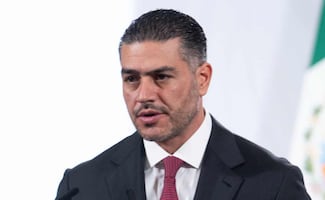When the Spanish arrived in the Great Tenochtitlán 500 years ago, they were horrified by the impaled heads displayed. The tales of the cruel sacrifices to honor the god Huitzilopochtli have been told for centuries and it has become a popular image that identifies this warrior society. Until now, the only information about these practices was the one described by the Spanish chroniclers but in 2015, the first clues about the “Huei Tzompantli” were discovered, as well as a circular structure associated with sacrifices . INAH archeologists consider that the skulls found on the site are key to decipher this ritual .
The analysis of the 179 skulls found in this site is in process but the first approximations have revealed that there are women and children among those who were sacrificed, not only male warriors , as it was thought. Until now, Abel Badillo Guzmán , a physical anthropologist, says that they have analyzed 98 skulls and identified 6 children, 52 men, and 33 women. “Almost all of them were young people between 18 and 25 years, there's only one case of a person older than 55,” says his colleague Jorge Gómez Valdés.
Raúl Barrera
, the archeologist leading the Urban Archeology Project of the Templo Mayor , is using physical and genetic anthropology to find more information about sacrifice. He says that “the women could be female warriors , but we don't know where do they come from or if they are foreigners. Some sources said that the children could reincarnate in a human being; then, their sacrifice could have an explanation, as if they were the representation of a deity.”
The INAH researcher says that there were seven tzompantlis , skull racks, in the sacred site of Tenochtitlán , that could have been dedicated to several gods but there's currently no evidence.
But what the archeologist does know is that this exhibition of skulls , tzompantli , was part of a sacrifice ritual linked to the regeneration of life.
“The sacrifice of warriors and the offering of their hearts was a gift to the Sun god , to strengthen him, to keep him alive and to be generous with human beings. It was an exchange.”
In the Mexica and Mesoamerican worldview , death was just a state to get to another level. But in Tenochtitlán , the Spanish saw in the sacrifice sites the argument “to justify the conquest .”
For Hernán Cortés and his men, says the archeologist, this was a display of “ barbarity and was the ideal excuse to legitimize the conquest . The conquest was that, a collapse, the destruction of their gods, their temples, to build a new society.”
The anthropologist is leading genetic studies to identify where did those sacrificed come from, who could have come from nearby communities from places like Oaxaca and Veracruz , places where the Mexica empire ruled.
He explains that the morphology and genetic studies could show “if they are individuals from the general population or if they are groups with particular biological and genetic characteristics that were chosen for their particular characteristics.”
Clues about the ritual
After recovering each of the skulls , the archeologists restored the pieces. When they were ready, they analyzed the marks of the cuts, which will allow them to understand the way in which the sacrifice was done and the type of tools they used. “We are trying to describe all the process, not just what happened at the time of the death, but how did these people live before the sacrifice. We can also learn what happened before and after the ritual ,” says Gómez Valdés.
For now, they only have a few clues. Raúl Barrera explains that Brother Bernardino de Sahagún and Brother Diego Durán offered some data on the chronics: “There was a ceremony , they were presented in the tzompantli , there were priests , they were formed and they were told a few words. They even say that some captives were taken to the homes of the warriors, they lived with the families; they were considered as part of a family but when the festivities arrived, they were sacrificed.”
At some point during the sacrifice , the captives were skinned , perhaps with the intention to “present the fleshless face, similar to the face of death . They all were skinned, but in the case of children it's more evident, the cuts are more intense, perhaps because the knives were smaller. It's something that was called our attention.”
The analysis has also shown that the majority of the skulls were deformed , a very common cultural practice in Mesoamerica , through which people acquired a certain “affiliation to a group.”
The work on the site continues. The group will work on rehabilitating and restoring the building, as well as the remains of the tzompantli, as they hope it'll be open to the public in the near future.
gm
Noticias según tus intereses
[Publicidad]
[Publicidad]















